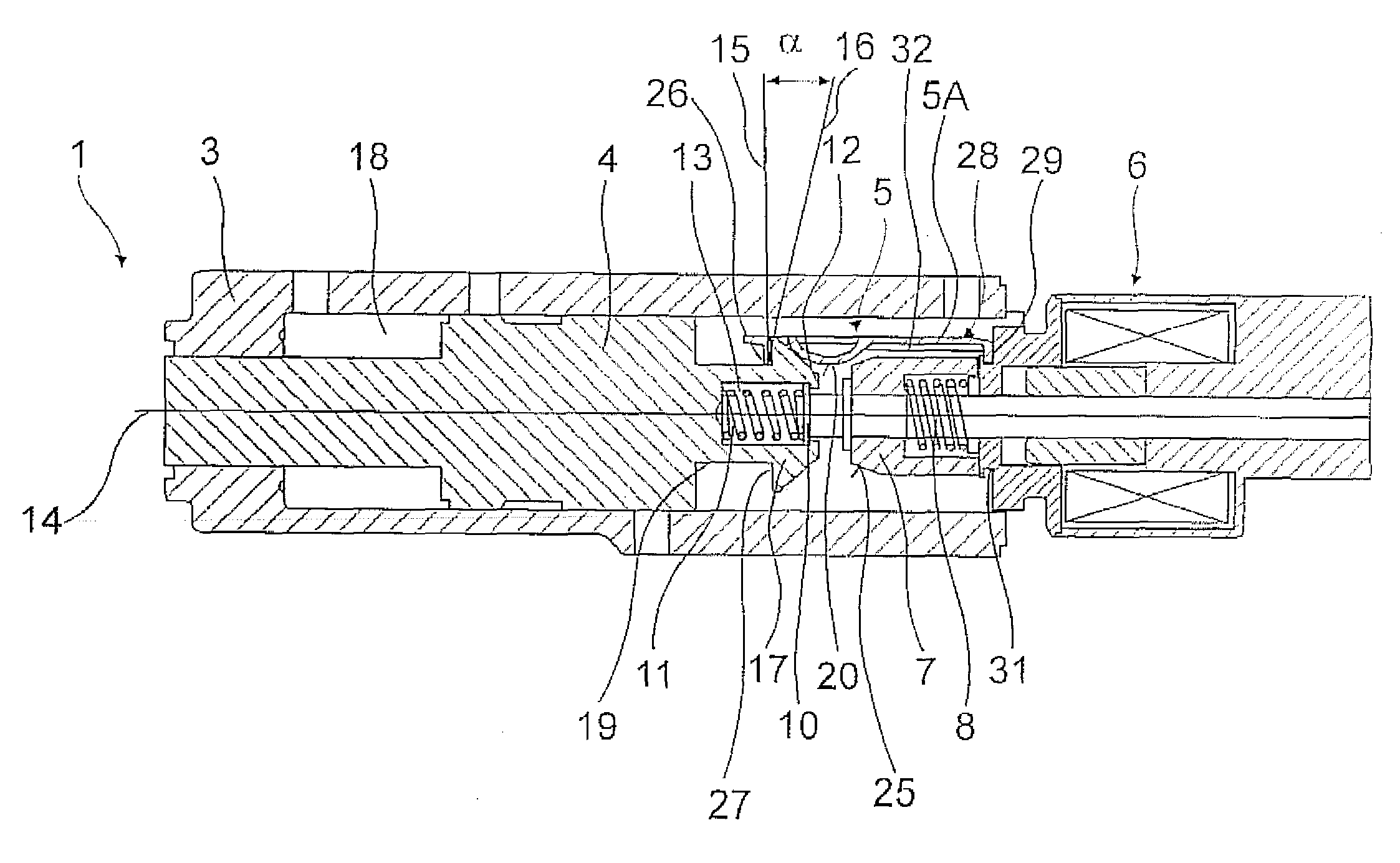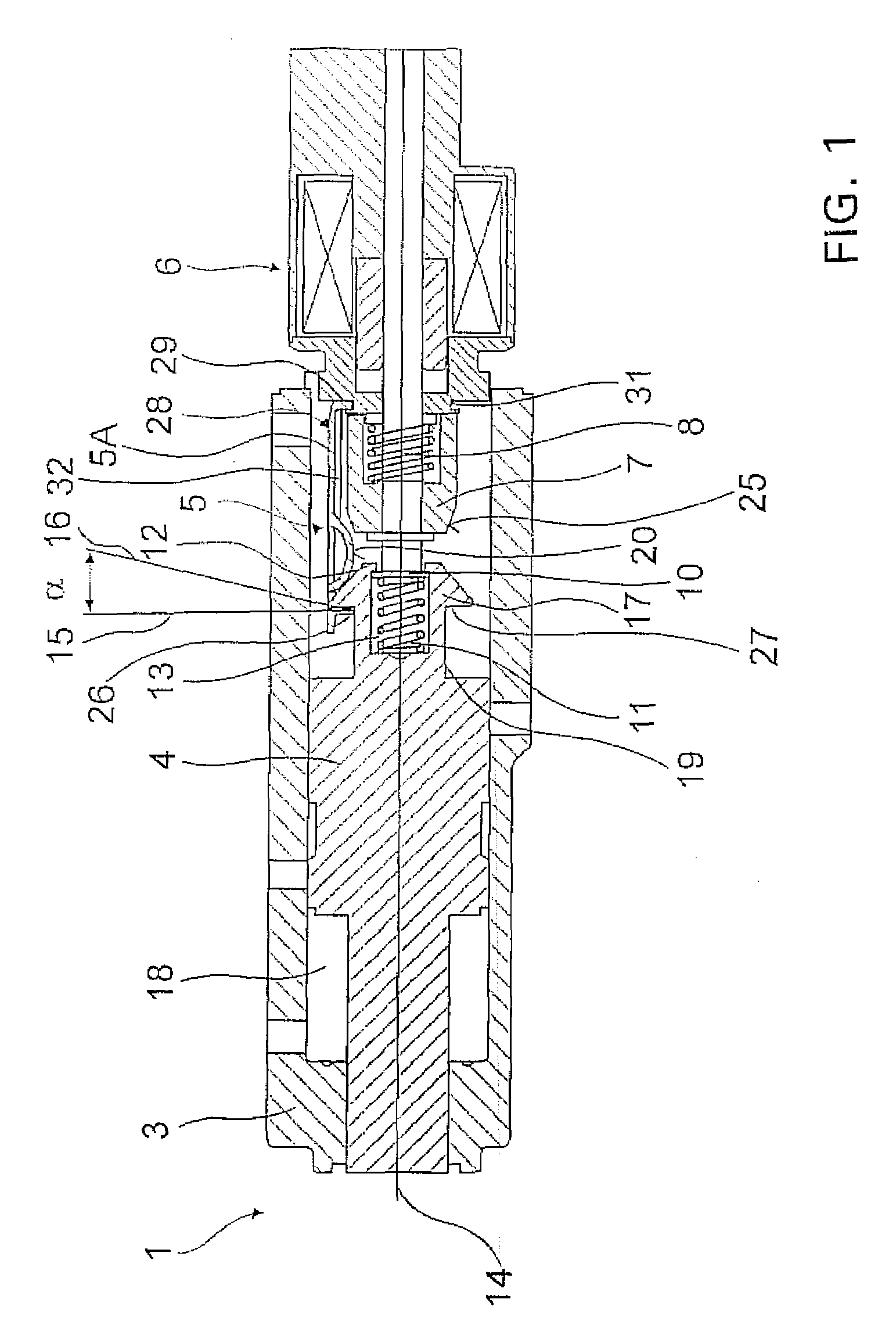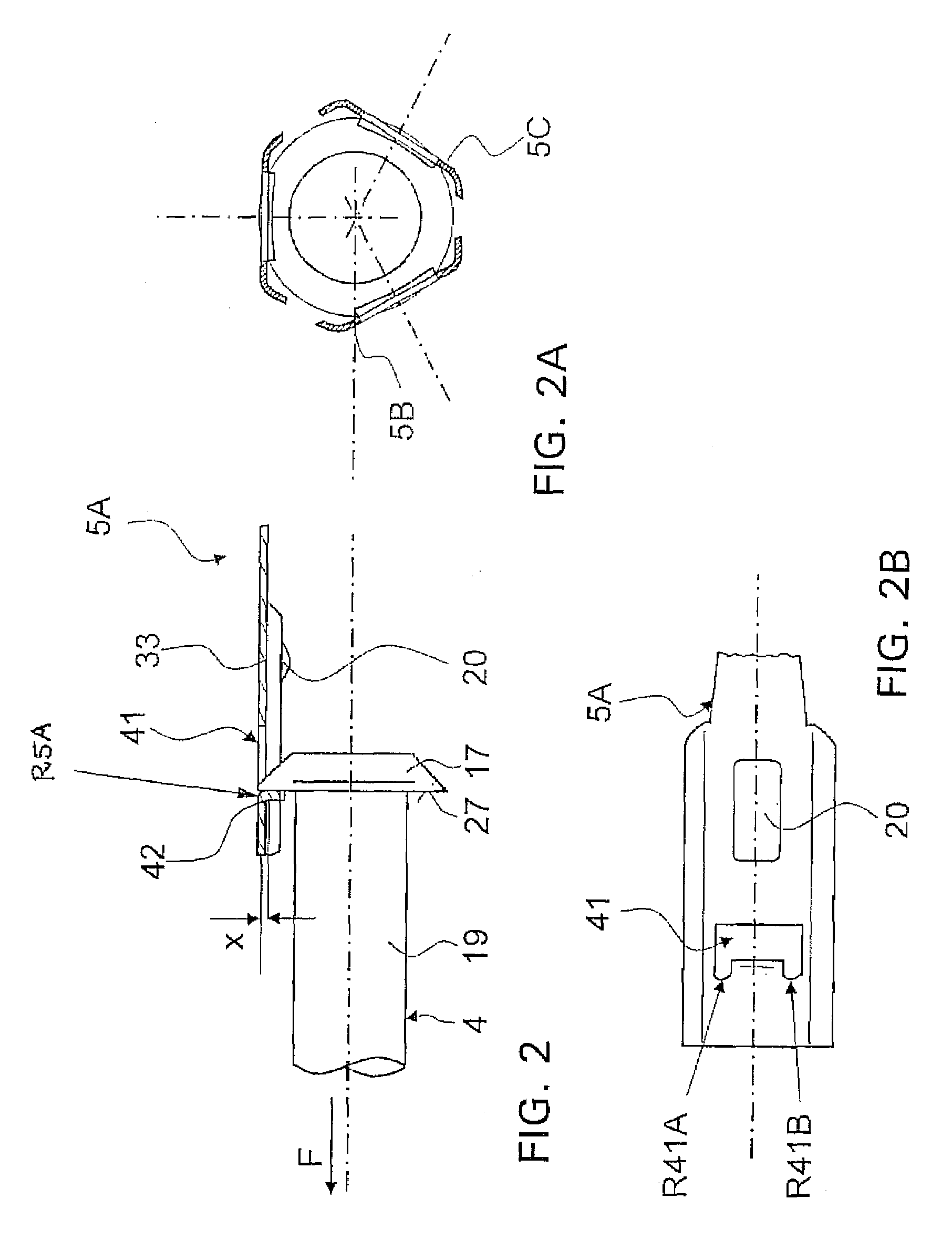Locking Apparatus
a technology of locking device and locking mechanism, which is applied in the direction of mechanical apparatus, spring/damper, shock absorber, etc., can solve the problems of inability to deactivate the effective connection between the actuating element and the catch element, high manufacturing tolerance, and extremely limited available space, so as to reduce the operating force of the locking device and improve the sticking prevention effect of the devi
- Summary
- Abstract
- Description
- Claims
- Application Information
AI Technical Summary
Benefits of technology
Problems solved by technology
Method used
Image
Examples
second embodiment
[0083]FIGS. 3A and 3B show the locking apparatus 1, according to the invention according to FIG. 1.
[0084]In addition to the recess 41, the spring arms 5A and / or 5B and 5C also have bends 32 in the longitudinal support area 33 in order to increase the bending stiffness of the spring arm 5A and / or the spring arms 5B and 5C in a longitudinal direction, while the bends 32 can be optionally shaped with a right angle or rounded in order to provide the smoothest possible transition to the longitudinal support area 33.
[0085]Additionally, the present design provides that the contact surface 26 in relation to the catch area 27, which is basically disposed vertically to the longitudinal axis of the piston unit 4, can be designed with a locking angle α, which can be provided within a range of 0° to 5°. The self-locking angle α permits simple adjustment of the locking force, which opposes the release of the locking apparatus 1 depending on the particular application. In the process, for a self-l...
PUM
 Login to View More
Login to View More Abstract
Description
Claims
Application Information
 Login to View More
Login to View More - R&D
- Intellectual Property
- Life Sciences
- Materials
- Tech Scout
- Unparalleled Data Quality
- Higher Quality Content
- 60% Fewer Hallucinations
Browse by: Latest US Patents, China's latest patents, Technical Efficacy Thesaurus, Application Domain, Technology Topic, Popular Technical Reports.
© 2025 PatSnap. All rights reserved.Legal|Privacy policy|Modern Slavery Act Transparency Statement|Sitemap|About US| Contact US: help@patsnap.com



